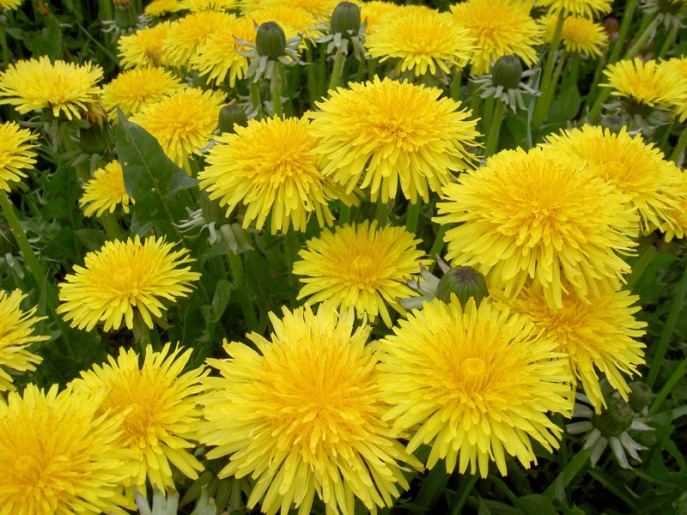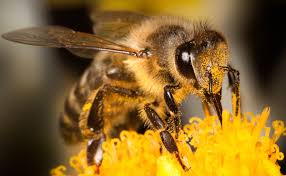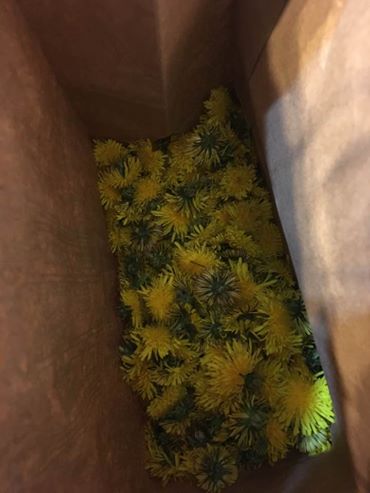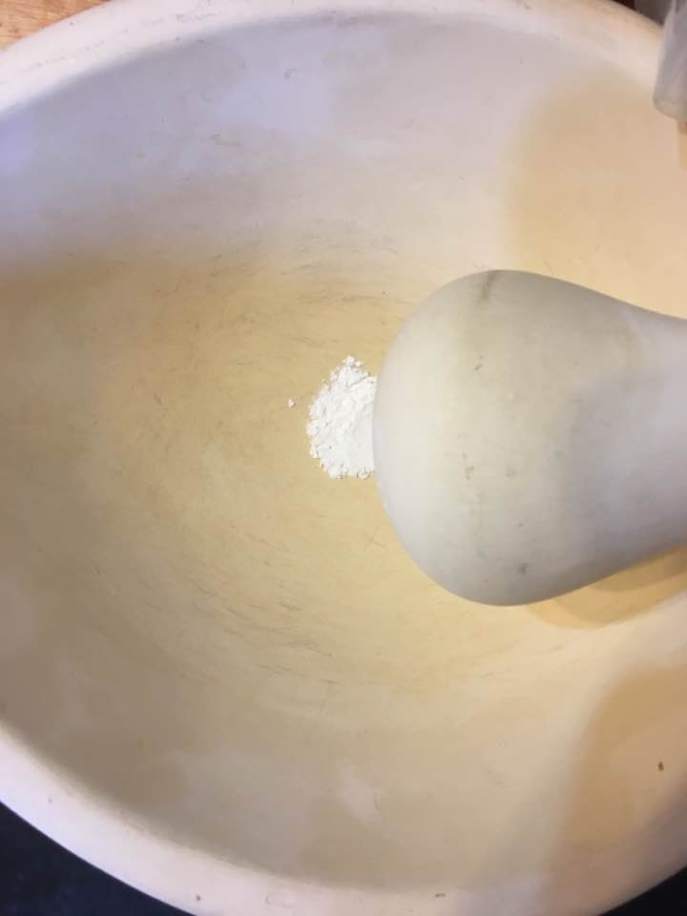Spring always feels exiting to me, with the new flowers bursting forth and the migratory birds returning. And, as a country wine-maker, I take special glee in the early abundance of dandelions. I’ll post the recipe, with links and general info, but a couple of things to start.

First, there is probably no faster, surer way of making the neighbors think you are a crazy person than wandering around with a sack and picking weeds. If you have kids, this is probably an excellent task for them, but you may want extra flowers so you can make something said kids can have, too.
Second, harvesting in public areas like alleys and verges is fine, but if you are going to be venturing into people’s yards, it’s courteous to ask first. Again, people will think this is peculiar, at best, and you will get answers ranging from “Pick them all!” (Note: don’t do this. More on that in a sec) to “Uh, sure…?” I try to avoid areas right along busy streets and places I know people spray pesticides. Abandoned lots are great. I also encourage dandelions in my own yard, where the worst they’ll get is some dog pee, which is easily cleaned off in the second step of the recipe. You’re looking for fresh-looking, fully opened flowers, and you want as little stem and green as possible.
Third and possibly most importantly, dandelions are important food for bees in early spring, so please do not denude areas of flowers! Early in spring, I never pick more than a third of any given area. Later on (I was late in my harvest this year), I may pick as much as 50% of a given patch. The front of my house has a lovely dandelion patch, but it also has a cherry tree and two serviceberry bushes, so I will often harvest 2/3 of the dandelions there, but as a rule I aim for a third to half. Leave old flowers with dried-looking edges and flowers that aren’t fully opened, and, of course, anything with a bee already in it.

To make dandelion wine, then: First, when you notice lots of those cheerful pops of yellow in lawns and gardens, it’s harvest time! I warn you that once you make dandelion wine, every patch of these tasty little weeds will get you feeling positively lustful. I can’t pass a field full of them without my fingers involuntarily flexing to pick some goodness.
For your wine, you will need 7-8 cups of flowers. Some recipes will tell you to use only the petals, but I will tell you that that is a giant pain in the butt and will take you hours and hours. So I harvest them as close tot he flower as possible. As I said earlier, don’t take more than a third to half of any given patch. I also try to space out my picking so there are flowers still nicely dispersed for the bees. I live in an urban area, but I rarely have to do much more than go around my block (occasionally crossing the street or venturing into a promising alley) to get my full haul.
 I use a plastic 4-cup measure paper bag with handles or a wicker basket– fill the measuring cup once, dump it into the bag, and refill. This usually takes me around half an hour if I’m at peak season. Earlier in the morning is better, as a rule, but even late morning works. Afternoons are hard as the flowers often close in the heat of the day, and overcast days don’t work well for the same reason. Watch for insects when you harvest, and try to remove them as you go.
I use a plastic 4-cup measure paper bag with handles or a wicker basket– fill the measuring cup once, dump it into the bag, and refill. This usually takes me around half an hour if I’m at peak season. Earlier in the morning is better, as a rule, but even late morning works. Afternoons are hard as the flowers often close in the heat of the day, and overcast days don’t work well for the same reason. Watch for insects when you harvest, and try to remove them as you go.
Once you have your harvest home safely, put a gallon of water on to boil. (It’s especially helpful if you have someone at home you can call to turn on the burner when you’re about 15-20 minutes away from home.) When the water’s boiling, remove it from the heat and pour it over your dandelions.  At this point, you will need one of your few specialized ingredients, a crushed Campden tablet,
At this point, you will need one of your few specialized ingredients, a crushed Campden tablet,  which you can get from wine supply shops like EC Kraus, Midwest Supplies, the Wine Maker’s Toy Store, or (ideally, because local economies are important) your local beer and wine supply store. To be fair, some winemakers do not use Campdens or commercial yeast in their wines, opting instead for the natural yeasts that are on the fruits and flowers already. I have never been quite brave enough for this approach, and since dandelions grow right at pee-height for dogs and cats, this doesn’t seem to me like the time to experiment with that. After you’ve stirred in your crushed Campden, let the whole mess steep for 24 hours. Then add 1/4 teaspoon tannin, 3 teaspoons acid blend, and 1/2 teaspoon yeast nutrient (also available from your wine store). Stir and chuck in white grape concentrate or a pound of golden raisins tied in cheesecloth. Then pitch (add) your yeast– I like Champagne or cider yeast– and then cover, attach an airlock, and wait.
which you can get from wine supply shops like EC Kraus, Midwest Supplies, the Wine Maker’s Toy Store, or (ideally, because local economies are important) your local beer and wine supply store. To be fair, some winemakers do not use Campdens or commercial yeast in their wines, opting instead for the natural yeasts that are on the fruits and flowers already. I have never been quite brave enough for this approach, and since dandelions grow right at pee-height for dogs and cats, this doesn’t seem to me like the time to experiment with that. After you’ve stirred in your crushed Campden, let the whole mess steep for 24 hours. Then add 1/4 teaspoon tannin, 3 teaspoons acid blend, and 1/2 teaspoon yeast nutrient (also available from your wine store). Stir and chuck in white grape concentrate or a pound of golden raisins tied in cheesecloth. Then pitch (add) your yeast– I like Champagne or cider yeast– and then cover, attach an airlock, and wait.
When the really active part of the ferment is over (or, if you want to be technical and use a hydrometer, when your specific gravity is at 1.000), siphon into a clean, sterilized gallon jug and move your airlock over. Siphon off lees every couple months until it’s clear and looks like a tawny white wine, and then bottle!